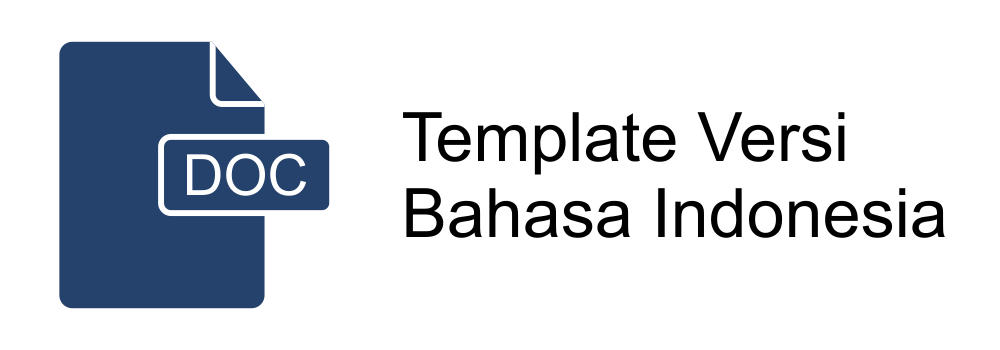Sound Waves and Consciousness in Saga dari Samudra: a Dialogical Study by Mikhail Bakhtin
Abstract
Saga dari Samudra by Ratih Kumala is an interesting novel to study. As a fiction, this novel weaves together historical facts of life in Java in the 15th century. This article is compiled to reveal the dialogic forms between the characters, space and time, and how the novelist dialogues and negotiates with the characters he builds. Data are collected in the form of sentences and clauses, classified using Bakhtin's dialogic criteria which include chronotope, polyphony, and carnivalesque. The classified data are then coded and analyzed textually. The conclusions and meanings revealed are the results of analysis using Bakhtin's Dialogic theory. The analysis conducted leads to the conclusion that dialogue can influence power structures, moral and social norms, the anxiety of two voices in the same event but do not judge each other. Change not only reflects individual transformation, but also describes a broader social reality, such as imbalance of power, ignorance or social pressure that influences his actions in the past. The reversal of social hierarchy, two interpretations in one incident, a symbol of moral ambiguity and crossed boundaries, at the same time marking the change from victim to perpetrator, how Taksa responded by accepting what Nyai Ageng Pinatih's servant did who did not like her.
Keywords
Full Text:
PDFReferences
Adila, V. M. (2023). Review Novel Saga dari Samudra Karya Ratih Kumala. Gramedia.Com. https://www.gramedia.com/best-seller/review-novel-saga-dari-samudra-karya-ratih-kumala/
Antonova, C. (2022). Aestheticizing an Einsteinian World: The Idea of Space-Time in Russian Literary Theory and in Art Criticism. In M. Emmer & M. Abate (Eds.), Imagine Math 8 (pp. 71–80). Springer International Publishing. https://doi.org/10.1007/978-3-030-92690-8_6
Apung, L. (2024). Menekuni Karakter Pahlawan dalam Saga dari Samudera. Bacapetra. https://www.bacapetra.co/menekuni-karakter-pahlawan-dalam-saga-dari-samudera/
Bakhtin, M. M., Medvedev, P. N., & Voloshinov, V. N. (1994). The Bakhtin Reader - Selected Writings of Bakhtin, Medvedev, Voloshinov (P. Morris (ed.); First). Edward Arnold.
Bronich, M. K., & Baranova, M. I. (2021). The Bakhtinian carnival in Chicano novels by Rolando Hinojosa. Studia Litterarum, 6(1), 152–169. https://doi.org/https://doi.org/10.22455/2500-4247-2021-6-1-152-169
Cohen, L. E. (2011). Bakhtin’s Carnival and Pretend Role Play; A Comparison of Social Contexts. American Journal of Play, 4(2), 176–203.
Dakamsih, N. J., & Al-Hammouri, raid N. (2022). Analyzing Toni Morrison’s The Bluest Eye in Terms of Bakhtin’s Notion of “Heteroglossia.” Theory and Practice in Language Studies, 12(9), 1945–1951. https://doi.org/https://doi.org/10.17507/tpls.1209.29
Dubrovskaya, S., & Osovsky, O. (2021). Mikhail Bakhtin’s Legacy and the Challenges of Modern Education: A 2010s’ Perspective Review of the book: Brandist C. et al. (eds) (2020) Bakhtin in the Fullness of Time. Educational Studies, 3, 284–297. https://doi.org/https://doi.org/10.17323/1814‑9545‑ 2021‑3‑284‑297
Elliot, S. (1999). Carnival and Dialogue in Bakhtin’s Poetics of Folklore. Folklore Forum, 30(1), 129–139.
Fabeela, C. K. (2021). Social Discourses as a Reflection of Mikhail Bakhtin’s Theory of Carnival: an Analysis of Select Social Practices. IOSR Journal of Humanities And Social Science (IOSR-JHSS), 26(3), 9–12. https://doi.org/10.9790/0837-2603060912
Gemziak, L. (2022). Polyphony and the Carnivalesque in Kyiv. Signs and Society, 10(2), 265–285. https://doi.org/https://doi.org/10.1086/718897
Karsten, A. (2024). Voices in Dialogue: Taking Polyphony in Academic Writing Seriously. Written Communication, 41(1), 6–36. https://doi.org/10.1177/07410883231207104
Kocaoğlu, D. (2020). A Bakhtinian Analysis of Dostoevsky’s Polyphonic Novel. SOFIA PHILOSOPHICAL REVIEW, November.
Korchinsky, A. (2020). The Politics of Polyphony: Dangerous Modernity and the Structure of the Novel in Dostoevsky and Bakhtin. Russian Studies in Literature, 56(3–4), 98–113. https://doi.org/10.1080/10611975.2020.2147377
Kumala, R. (2023). Saga dari Samudra. Gramedia Pustaka Utama.
Ladiba, S., & Koebanu, S. (2024). Karakteristik Tindakan Sosial dalam Novel Saga dari Samudra Karya Ratih Kumala dengan Perspektif Max Weber. Sabda, 3(3), 233–241.
Lamase, S. A. (2024). Mengungkap Misteri Abad ke-15 dalam “Saga dari Samudra” Karya Ratih Kumala. Yoursay.Id. https://yoursay.suara.com/ulasan/2024/04/13/174500/mengungkap-misteri-abad-ke-15-dalam-saga-dari-samudra-karya-ratih-kumala
Mahsun. (2014). Metode Penelitian Bahasa. Raja Grafindo Persada.
Manshur, F. M. (2017). Bakhtin’s Theory of Dialogism and Methodological Concepts. Sasdaya; Gadjah Mada Journal of Humanities, 1(2), 235–249.
Nadliriyah, N. (2024). Saga dari Samudra; Cerita Laga karya Ratih Kumala. Serambi Naqiibah. https://www.naqiibah.com/2024/05/saga-dari-samudra-cerita-laga.html
Nascimento, L. (2021). From Philosophy to Discourse: Mikhail Bakhtin. Revista Eletrônica Interfaces, 12(01), 69–82.
Ratna, N. K. (2008). Teori, Metode dan Teknik Penelitian Sastra (Ke empat). Pustaka Pelajar.
Sari, N. T. R. (2024). Ikon, Indeks, dan Simbol dalam Novel Saga dari Samudra Karya Ratih Kumala: Kajian Semiotika Charles Sanders Pierce. Sapala, 11(2), 1–11.
Sihombing, T. S., Suntoko, & Hartati, D. (2024). Analisis Konflik Sosial dalam Novel Saga dari Samudra karya Ratih Kumala: Kajian Sosiologi Sastra. Lingua Susastra, 5(2), 179–191. https://doi.org/https://doi.org/10.24036/ls.v5i2.340
Simpson, A. (2023). Reconfiguring Intercultural Communication Education through the dialogical relationship of Istina ( Truth ) and Pravda ( Truth in Justice ) through the dialogical relationship of Istina ( Truth ) and. Educational Philosophy and Theory, 55(4), 456–467. https://doi.org/10.1080/00131857.2022.2098109
Skaftun, A. (2024). Can dialogic eventness be created ? Theory Into Practice, 63(2), 158–169. https://doi.org/10.1080/00405841.2024.2307838
Sudaryanto. (1988a). Metode Linguistik: Ke Arah Memahami Metode Linguistik. Gadjah Mada University Press.
Sudaryanto. (1988b). Metode Linguistik: Metode dan Aneka Teknik Pengumpulan Data. Gadjah Mada University Press.
Sudaryanto. (1993). Metode dan Aneka Teknik Analisis Bahasa, Pengantar Penelitian Wahana Kebudayaan secara Linguistis. Duta Wacana University Press.
Sudaryanto. (2015). Metode dan Aneka Teknik Analisis Bahasa. Sanata Dharma University Press.
Vallance, M., & Towndrow, P. A. (2022). Perspective: Narrative Storyliving in Virtual Reality Design. Frontiers in Virtual Reality, 3(March), 1–5. https://doi.org/10.3389/frvir.2022.779148
Welayana, A. S. (2024). Nilai-Nilai Kemanusiaan dalam Novel Saga dari Samudra Karya Ratih Kumala Kajian Sosiologi Sastra. Hasta Wiyata, 7(2), 269–280. https://doi.org/10.21776/ub.hastawiyata.2024.007.02.10
Zhongwen, Q. (1997). Problems of Bakhtin’s Theory about “Polyphony.” New Literary History, 28(4), 779–790.
DOI: https://doi.org/10.26499/surbet.v20i1.30812
Refbacks
- There are currently no refbacks.

This work is licensed under a Creative Commons Attribution-NonCommercial-ShareAlike 4.0 International License.
This work is licensed under a Creative Commons Attribution-NonCommercial-ShareAlike 4.0 International License.











